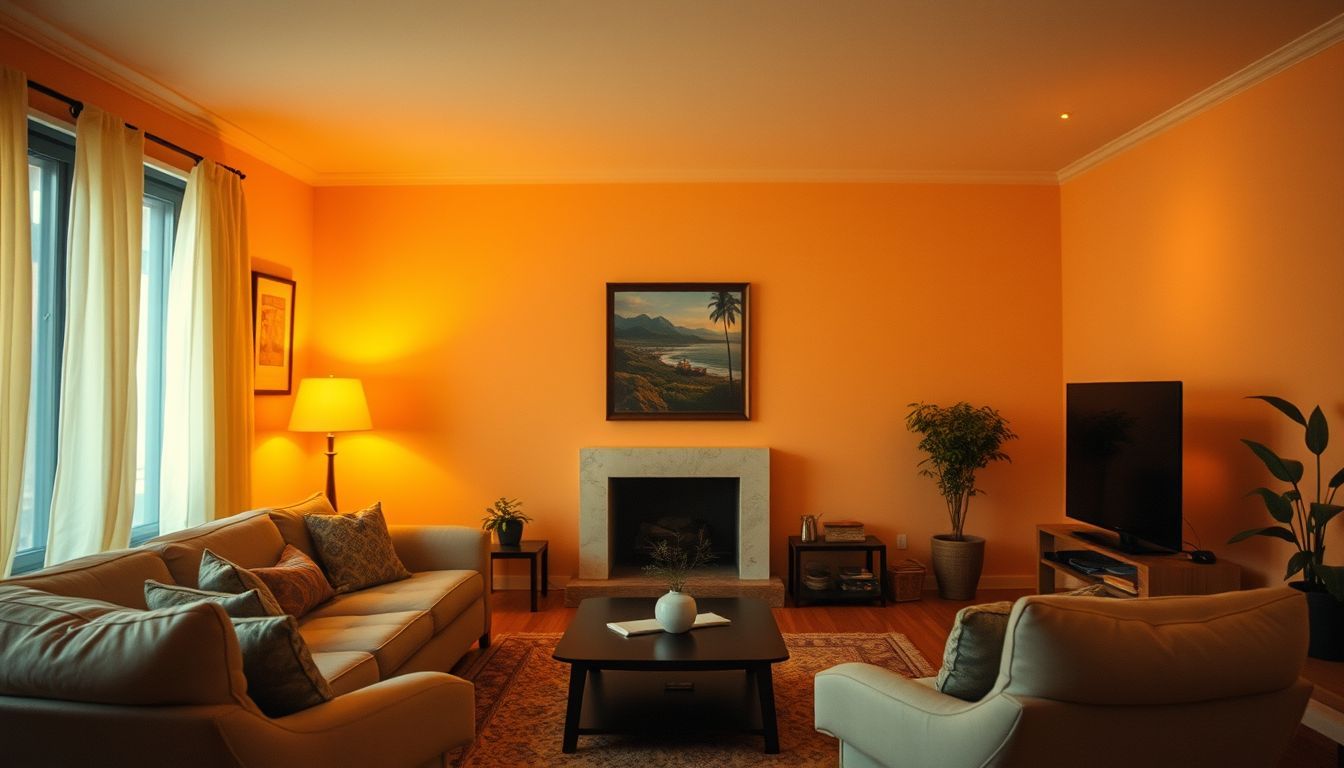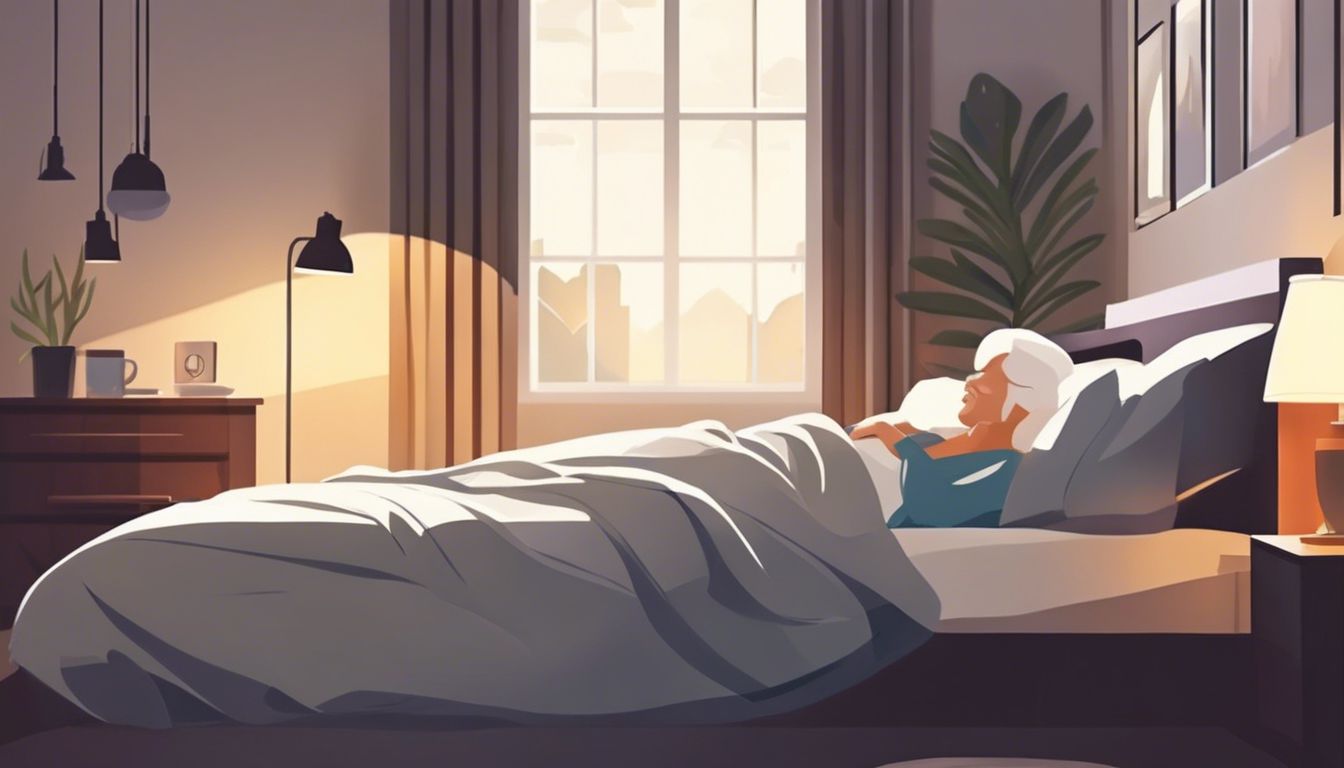Picking the right color for a caregiver’s bedroom is tricky. Colors affect our mood and energy. This article will show you colors that bring comfort and calm to caregivers’ rooms. Read on, find your perfect shade.
Key Takeaways
- Colors affect mood. Warm colors like soft orange and muted yellow make rooms feel cozy and happy. They are good for caregivers’ bedrooms.
- Cool colors help relax. Light blue and gentle green soothe the mind and can make it easier to rest or heal.
- Some special colors help people with memory issues feel better. For example, places where people with Alzheimer’s live use soft orange to boost social feelings and light blue for calmness.
- Not all bright colors are good in every case. Too much bright yellow might be hard on the eyes for some people.
- Choosing the right color for a caregiver’s bedroom is important. It makes both caregivers and those they care for feel better.
Best Warm Colors for Comfort and Energy

Warm colors bring comfort and energy to a room. Soft orange and muted yellow light up the space, making it feel cozy and full of life.
Soft Orange: Invokes Warmth and Rejuvenation
Soft orange brings joy and life to a room. It makes people think of the outdoors and has earth tones that add comfort. This color is great for areas like caregiver bedrooms, where feeling good is key.
But, bright orange might seem too loud or show danger. So, it’s better to choose softer shades of orange for a calm yet uplifting space.
Sherwin-Williams made special colors for places where people with memory issues live. These colors help them feel calm and happy. Soft orange can be part of these colors because it helps with social feelings and reaching goals.
In rooms for caregiving, using soft orange with other mild colors can make a place where everyone feels better and more at home.
Muted Yellow: Brightness that Stimulates Positivity
Muted yellow lights up a room with hope and joy. Harvard University found that older adults have happy memories tied to certain colors, including yellow. This color helps bring out creativity and makes people feel good inside.
It is great for making spaces look brighter and more welcoming.
This shade of yellow also helps those with low vision or who are color-blind see better because it stands out well. But, too much bright yellow might be hard on the eyes for some, like babies or individuals with ASD (Autism Spectrum Disorder).
So, using muted yellow in a caregiver’s bedroom can make it a positive space without being too overwhelming.
Best Cool Colors for Relaxation and Calm
For a caregiver’s bedroom, cool colors can create a quiet space. Light blue and gentle green soothe the mind, making it easier to rest.
Light Blue: Promotes Serenity and Lower Stress
Light blue walls can make a bedroom feel like a calm place. This color helps people relax and lowers stress. Studies show light blue might even lower blood pressure. It’s great for places where caregivers want to rest.
Blue promotes calmness and may reduce blood pressure.
Caregivers find light blue soothing, making it easier to sleep or take a break. Sherwin-Williams made special colors for places where people with Alzheimer’s live. Light blue is one of those colors because it helps bring peace and makes rooms look nice without being too bright or dull.
Gentle Green: Encourages Restfulness and Healing
Gentle green makes people feel calm and helps in healing. It turns a small room look big and peaceful. Kids with ASD like green the most, says a study. This color also helps dementia patients feel more sure of themselves.
Green lowers stress by making less work for the central nervous system. For those taking care of people with Alzheimer’s, using lime green can make safety signs easier to see. This color brings balance and peace, making it great for caregivers’ bedrooms.
Conclusion: Choosing the Right Color for Your Needs
Picking the right color for a caregiver’s bedroom helps both the caregiver and senior feel better. Warm colors like soft orange and muted yellow make a room cozy and bright. They help lift spirits.
Cool colors such as light blue and gentle green calm the mind and soothe nerves. These choices matter in rooms, especially when caring for someone with Alzheimer’s. Find what works best for you, keeping comfort, energy, relaxation, and calm in mind.
Your choice can improve moods every day.
Discover how to further enhance your caregiving bedroom with the perfect mattress by exploring our guide on the best mattress options for caregivers.
FAQs
1. How can color therapy impact a caregiver’s bedroom?
Color therapy, or chromotherapy, influences moods and emotions. For caregivers dealing with Alzheimer’s disease and related dementias (ADRD), contrasting colors can help improve depth perception while certain hues may stimulate appetite.
2. Are there specific colors recommended for dementia care?
Yes, interior designers suggest that darker blues and shades of pink are beneficial in dementia care as they promote calmness and emotional well-being.
3. Can the choice of colors aid cognitive abilities in people with neurodiverse conditions like ADHD?
Indeed! Neurotypical or neurodiverse individuals such as those with ADHD might find their cognitive ability enhanced by certain colors consciously chosen to capture visual attention.
4. What role does color play for residents in nursing homes or assisted living facilities?
Colors matter greatly… In these settings, color schemes need careful planning… They should not only be appealing but also cater to potential visual impairments due to aging or diseases like Alzheimer’s…
5. Why is considering color-blindness important when designing a caregiver’s room?
Considering color-blindness helps ensure the room is comfortable for everyone… It allows people who experience this condition to navigate the space easily without added stress…
6. Can the choice of bedroom colors affect mental well-being?
Absolutely! Color theorists believe that our brains associate certain colors with emotional memories which can influence human behavior… So choosing calming violets, purples, pinks etc., could have positive effects on mental health…









